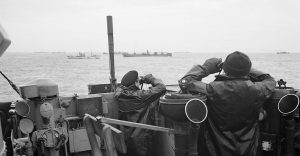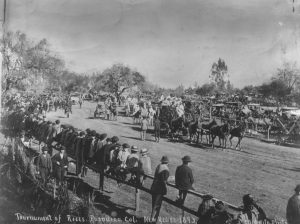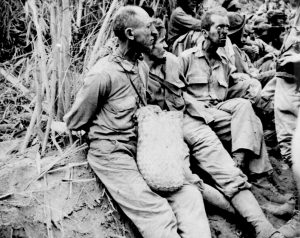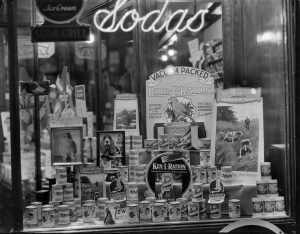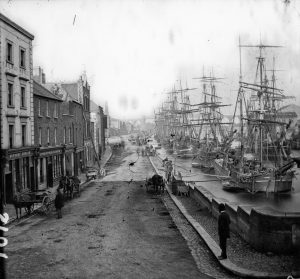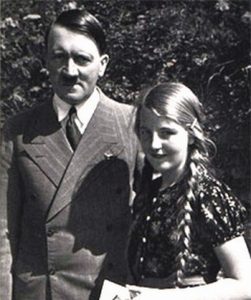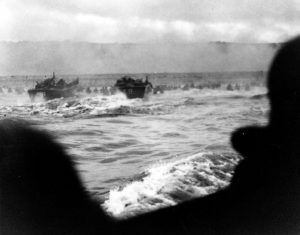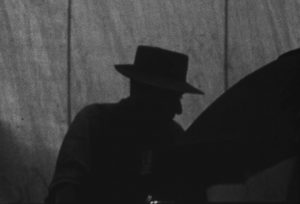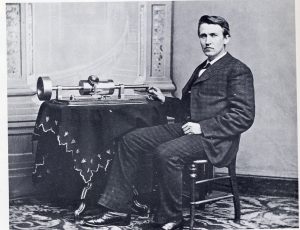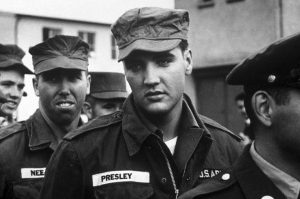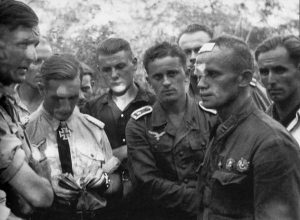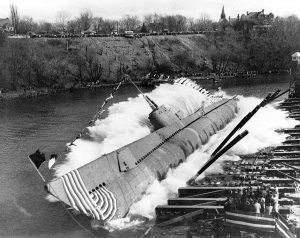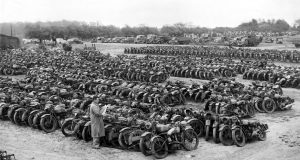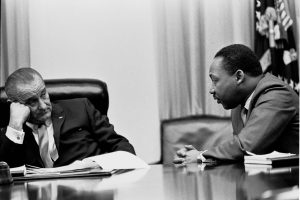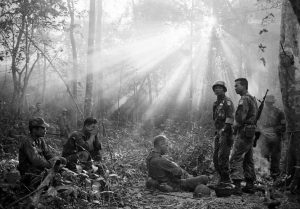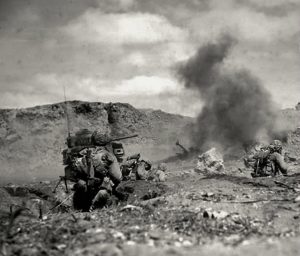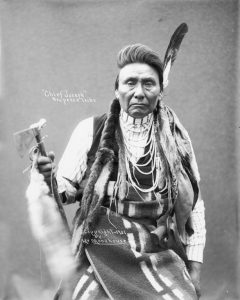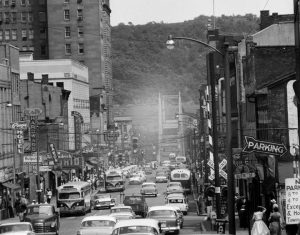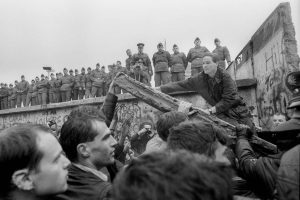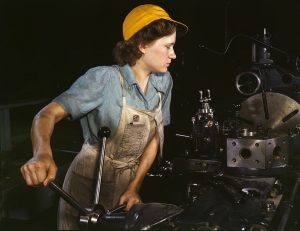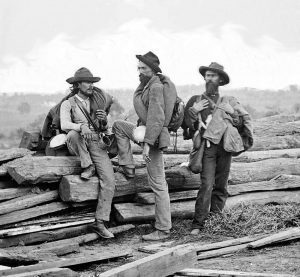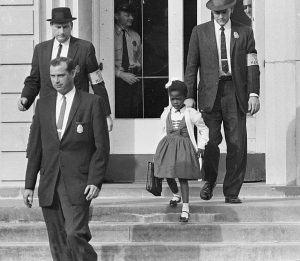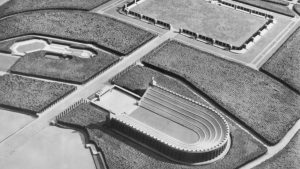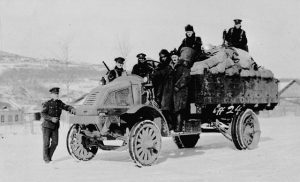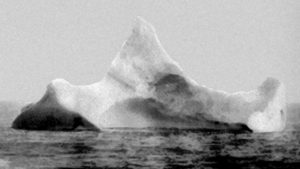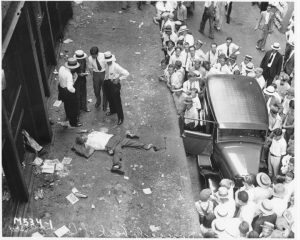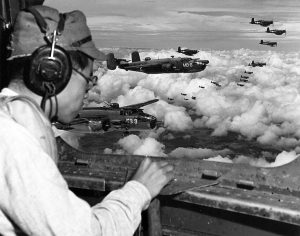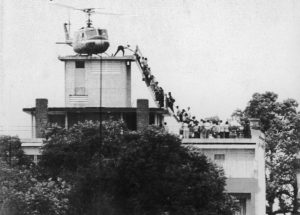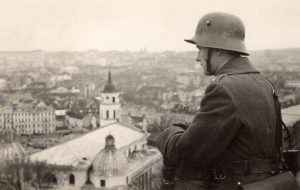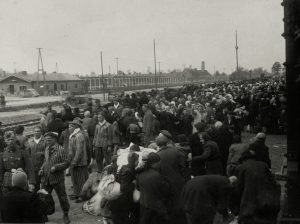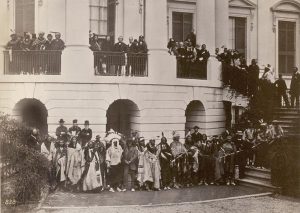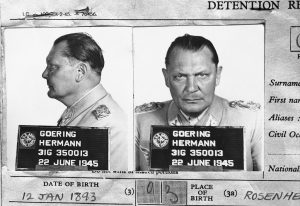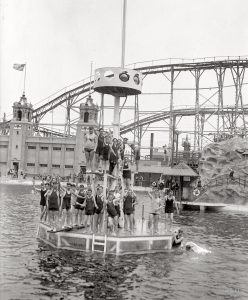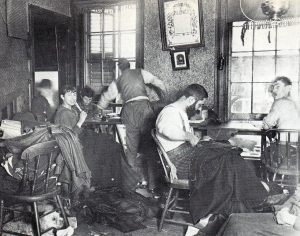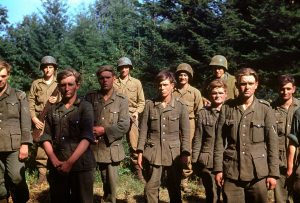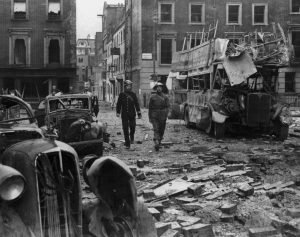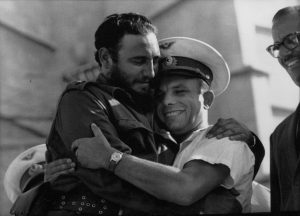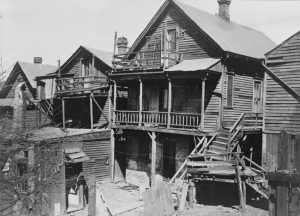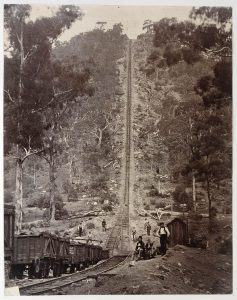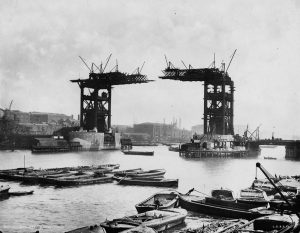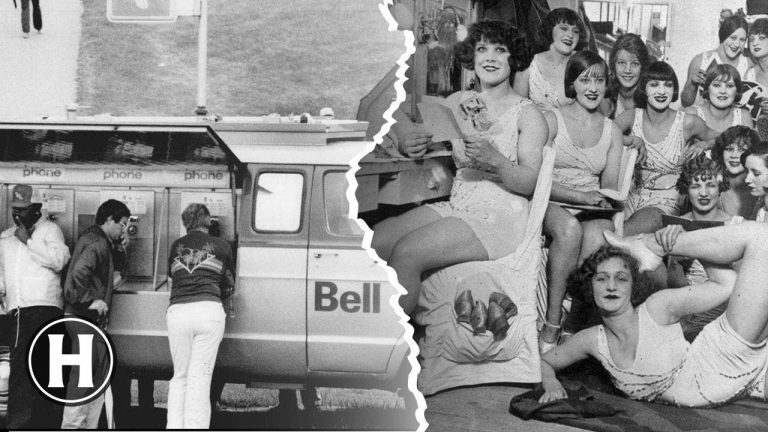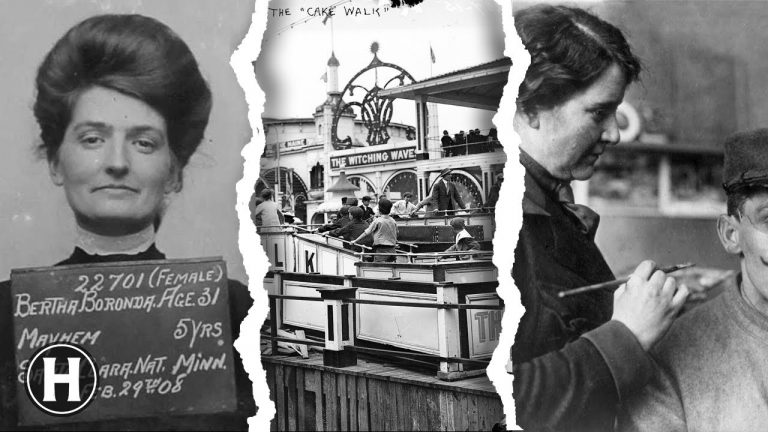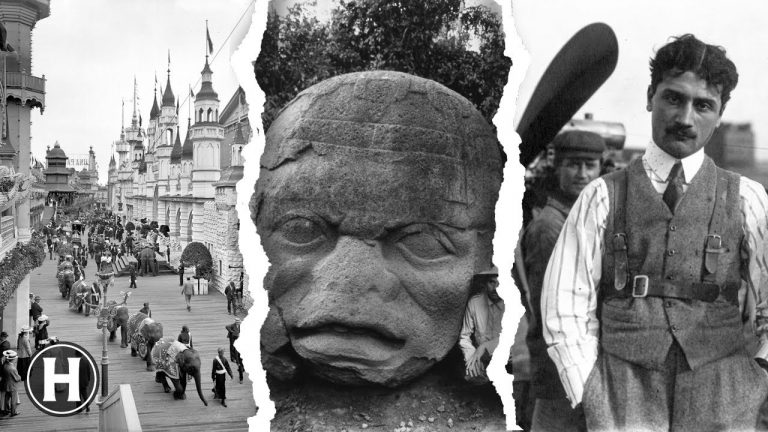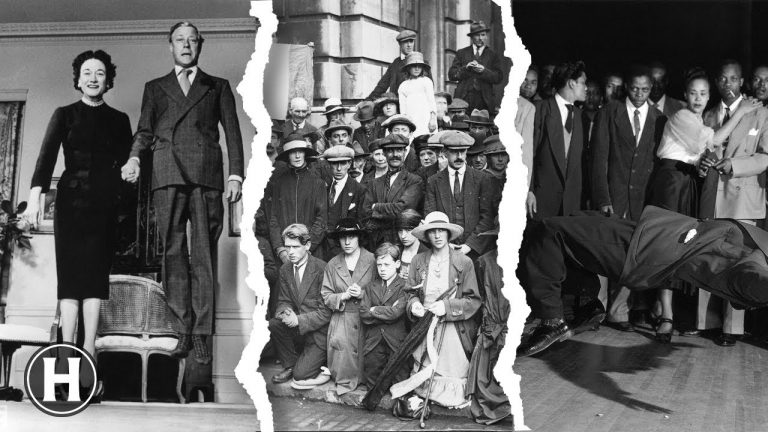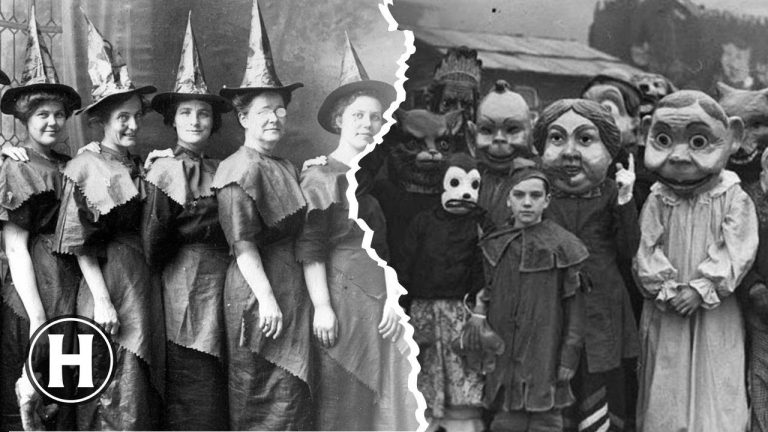Step back in time and witness the power of history through a series of remarkable images that capture some of the most pivotal moments and infamous figures of the past centuries.
Watching for U-Boats (1941)
In 1941, the Battle of the Atlantic was at its peak. Escorting convoys was a vital, risky task for destroyer crews. They had to be constantly alert for German U-boats, which were a significant threat to Allied shipping during World War II.
Rose Parade (1893)
The Tournament of Roses Parade was first held on New Year’s Day 1890, but its first flowery floats, a hallmark of the event, didn’t appear until the 1893 parade, setting a colorful tradition for the new year. This floral festivity precedes the Rose Bowl football game.
Bataan Death March (May 1942)
During the infamous Bataan Death March in May 1942, about 60,000-80,000 Filipino and American troops were forced to march nearly 65 miles under extreme conditions by the Japanese army. This brutal event caused thousands of deaths.
Store Window Pet Food (c. 1930)
In the 1930s, Baraboo saw the introduction of a pet food window, a novelty in modern convenience. This was actually one of the first self-service innovations for pet owners, allowing them to purchase food for their furry friends without entering a store.
North Quay, Drogheda (ca. 1865)
Located on the Boyne River, North Quay in Drogheda, Ireland (ca.1865) was a bustling hub during the Industrial Revolution, notable for exportation of linen and local grain. The era’s architecture can still be glimpsed today.
Geli Raubal and Hitler (1908-1931)
Geli Raubal’s mysterious death heightened rumors of her intimate relationship with Adolf Hitler. Her alleged suicide took place in Hitler’s Munich apartment, making him the last person to see her alive. This fueled speculations about Hitler’s involvement in her death.
Omaha Beach: 1st Wave (1944)
Omaha Beach was the deadliest D-Day landing spot. Its successful storming by the US Army Rangers marked a turning point in World War II and showcased the Rangers’ unrivaled courage and skill.
“Oppenheimer Supervises Trinity Test” (1945)
“The Gadget” was the code name for the first atomic bomb, which Oppenheimer referred to as ‘technically sweet’. Yet, its detonation filled him with dread, famously quoting “I am become Death, the destroyer of worlds” from Hindu scripture.
Edison’s Tin Foil Phonograph (1878)
In 1878, Thomas Edison introduced the tin foil phonograph, a groundbreaking device that could record and reproduce sound. It was in Washington DC that he demonstrated this incredible invention to the baffled scientific community as well as Congress.
Elvis Enlists (1958)
Elvis Presley was drafted into the U.S. Army at the height of his career. He served in Germany where he met his future wife, Priscilla Beaulieu. Despite being the world’s biggest heartthrob, he lived like a regular soldier without seeking special treatment.
Antonov in German Custody (1942)
Major Yakov Ivanovich Antonov was captured during WWII and held in German custody in Mozdok, 1942. Yakov, a decorated officer, was part of Soviet Union’s Red Army which resisted the German invasion during Operation Barbarossa.
“USS Puffer Launched” (1942)
The USS “Puffer” was a Gato-class submarine, specifically designed for long-range missions. Interestingly, it was built far from the sea in Wisconsin, due to the fear of coastal shipyards being vulnerable to enemy attacks during World War II.
Military Motorcycles (1946)
Surplus military motorcycles from 1946 often became popular purchases for civilians after WWII. With the war over, the military had a surplus, hence sold these durable and reliable vehicles very affordably. They played a key part in the rise of motorcycle culture.
LBJ & MLK: Voting Rights (1965)
This interaction between President Johnson and Martin Luther King Jr. showcases a significant moment in U.S history where political power and civil movements united for a common cause, leading to the seminal Voting Rights Act of 1965, which targeted racial discrimination.
Viet Cong Ambush: 40 Miles East (1965)
In 1965, amid Vietnam’s remote jungles, 40 miles east of Saigon, soldiers spent a tension-filled night, awaiting a Viet Cong ambush that never occurred. The phantom would be just one of countless psychological skirmishes in this grueling Cold War-era conflict.
U.S. Marines Attack Iwo Jima (1945)
The Battle of Iwo Jima was one of the bloodiest of the Pacific war. Despite being outnumbered, Japanese forces fiercely resisted. The iconic photo of U.S. soldiers raising the flag on Mt. Suribachi, symbolizing victory, is from this battle.
Chief Joseph of Nez Perce (1901)
Chief Joseph, also known as Hin-mah-too-ya-lah-kekt, was a skilled diplomat and leader of the Nez Perce tribe. His speech, “I Will Fight No More Forever” in 1877, is renowned for eloquently expressing peaceful surrender after a long but futile resistance against U.S. forces.
Steubenville, OH (Prime)
The Akron Pros, Ohio’s first professional football team, made history in 1920 by winning the inaugural championship of the American Professional Football Association, which later became the National Football League (NFL).
Berlin Wall Falls (1989)
The fall of Berlin Wall in 1989 marked an end to the Cold War era, symbolizing one of history’s most powerful moments towards freedom and reunification of East and West Germany after 28 years of separation. Peaceful revolutionaries accomplished what many thought was impossible.
Woman in Aircraft Plant, 1940s
During WWII, many women like this one in Fort Worth, Texas, joined the workforce as part of the “Rosie the Riveter” movement, assisting in aircraft production. This greatly boosted the U.S. war effort and marked a shift in gender roles in society.
Captured Confederate Soldiers (1863)
Despite their dire situation, the three Confederate soldiers who were captured at Gettysburg in 1863 retained a sense of dignity and defiance in their poses. These images provide a rare, personal glimpse into the American Civil War’s brutal reality.
Ruby Bridges Escorted by U.S. Marshals (1960)
Ruby Bridges was just six years old when she made her historic walk. Despite extreme racial prejudice and daily harassment, she never missed a day of school that year, leading to the desegregation of US education.
Hitler’s 400K Stadium (1936)
Hitler’s planned 400,000 seat stadium for the 1936 Olympics marked his global vision. The project, larger than any stadium in history, was a part of Hitler’s massive construction plan to project Nazi Germany’s power and superiority to the world.
Canadian Siberian Expedition (1919)
The Canadian Siberian Expeditionary Force (1918-19) was a controversial military deployment post-WWI. Despite Canada’s strong disagreements with the Bolsheviks, the mission was quite unpopular domestically, viewed as unnecessary interference in Russian affairs.
Titanic Sunk by Iceberg (1912)
The iceberg that sank the Titanic was estimated to have begun its journey approximately 3,000 years ago. It’s calculated that only a small fraction (around 10%) of this colossal iceberg, standing 300ft below water, was visible above the surface.
Wall Street Jumper (1929)
When the stock market crashed in 1929, it led to the Great Depression. A myth was perpetuated stating that many despaired investors leapt to their death from Wall St. buildings. In reality, the suicide rate only rose slightly during this period.
Lt. Wada Directs US Airstrike (1944)
Lt. Minoru Wada’s cooperation as a defector was crucial to Operation Vengeance. His intimate knowledge of Japanese tactics, operational procedures, and signal codes helped the Allied forces execute a successful air attack on Admiral Yamamoto in 1943.
The Fall of Saigon (1975)
An interesting fact about the Fall of Saigon is that Operation Frequent Wind, the final phase of the evacuation, was the largest helicopter evacuation in history. Over 7,000 people were airlifted from various parts of Saigon.
Lithuanian Soldier at Gediminas’ Tower (1939)
In 1939, Lithuania agreed to the Ultimatum by the Soviet Union that allowed it to station troops within the country. Watching over Vilnius wasn’t just about safeguarding the city, but also symbolized their forced submission to a dominant foreign power.
Auschwitz Jews Await (May 1944)
This moment captures the chilling “Selection Process” at Auschwitz-Birkenau, where Nazi doctors decided who lived or died instantly. The arrival process was so quick and immediate, many didn’t realize the enormity of their predicament.
Indian Delegation Meets Johnson (1867)
In an unprecedented move by the U.S. government, a delegation of Native American leaders met President Andrew Johnson at the White House on Feb 23, 1867. This was a diplomatic attempt to negotiate peace amid heightened U.S.-Indian conflicts.
Hermann Goering’s Mugshot (1945)
Captured by the Allies, this mugshot of Hermann Goering, a leading member of the Nazi Party, was taken on June 22,1945. Displaying a somber expression, it’s a stark contrast to his formerly powerful status as Hitler’s designated successor.
“Starlight Park” in Bronx (June 1921)
Starlight Park, opened in 1921, created Bronx history as the first amusement park. Interestingly, it was born from the 1918 World’s Fair site, hosting wonders like a roller coaster, pool and stadium.
Jacob A. Riis’ 1905 Tenant Apartment (1905)
This 1905 photo of a crowded Ludlow St. apartment by Jacob A. Riis revealed the abject living conditions of urban poor, sparking public outrage that laid the groundwork for the passing of crucial housing reform legislations in the US.
German POWs in France (June 1944)
Over 200,000 German soldiers were captured in France following D-Day in June 1944. Instead of being held in Europe, many were transported to prisoner of war camps across the U.S, which had more resources and space for the growing number of POWs.
Damage After London Bombing (1940)
During WWII, London’s Portman Street saw major bombings during The Blitz, a German bombing offensive against the UK in 1940. Bomb Damage Maps were created by the London City Council to assess war damage, now valuable historical documents showing the devastation.
Fidel & Gagarin Hug (1961)
In 1961, Fidel Castro, the controversial leader of Cuba, warmly embraced Yuri Gagarin, the first human to journey into outer space. This iconic event symbolized the camaraderie between socialist nations amid Cold War tensions. Both men became and remain symbols of defiance.
Milwaukee Slums (1936)
In 1936, slums housed a staggering 70% of Milwaukee’s population, highlighting the extent of the Great Depression’s impact. This period saw heightened poverty levels, substandard living conditions and unemployment, reflecting nationwide social and economic challenges.
August Tronier’s Joadja Railway (ca. 1885)
This sentence primarily showcases the value and resilience of handcrafted structures. Whether it refers to a building, tool, or even a piece of art, the fact that it was created without modern machinery or technology illustrates an impressive mastery of crafting skills. The fact that it’s still used today speaks to the high quality and durability of the object, as it has stood the test of time.

